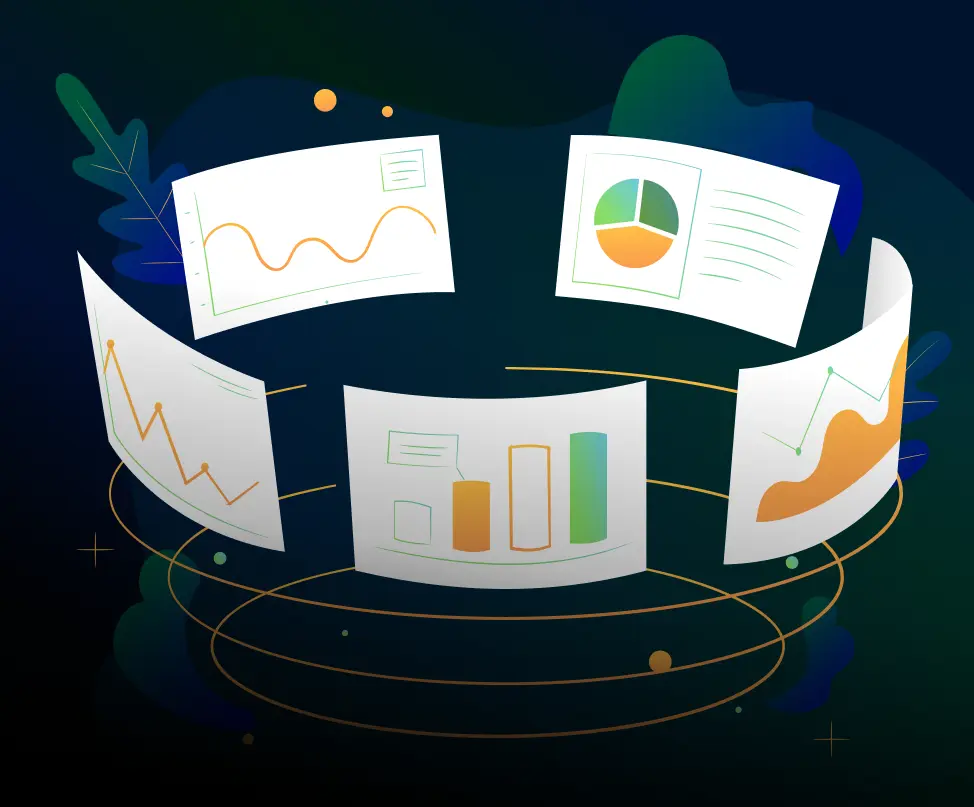How the use of reporting can help you improve the liquidity and profitability of your trading platform
Reporting is more than just a list of dry numbers in tables and graphs. With the skillful use of the data that is stored in the reports, you can greatly reduce or eliminate the different types of risks that a broker or exchange may face in different situations. That's why we constructed an entire component for the TickTrader Liquidity Aggregator that can build different types of reports depending on the functions used. In this publication, we will discuss exactly how these reports can make life easier for your risk managers.
The TickTrader Liquidity Aggregator is capable of building two types of reports — those that run in interactive mode and those that can be accessed for historical data. Interactive reports update information in real time, and we'll discuss them first.
Interactive reports (Balance reports)
This type of reporting generates a feed of the balance on brokerage accounts and open positions. It represents a table in which open positions on clients' accounts are displayed in real time. Using it, it is possible to check at any time the total position opened for each liquidity provider and for each symbol. This table also provides a comparison of the volume of an open position on providers with the volume of an open position with clients. Imbalances in the given positions, namely the lack of sufficient coverage of clients' positions by liquidity providers, carry significant risks for brokers.
The value.
The average broker is very likely to use the services of several liquidity providers at once. This tool enables quick monitoring of the balances and assets on each of the providers. Employees responsible for risk management get an accurate picture of how many positions should be covered by liquidity providers, if there is any need to do so.
Historical reports
This type of reports includes several subtypes, which differ according to the type of interaction with clients and liquidity providers.
ECN reports
TickTrader Liquidity Aggregator allows you to set up a full-fledged ECN model, where orders of different clients can be matched with each other without the need to execute them on external liquidity providers. This report enables uploading statements of the orders that were executed within the ECN, as well as data on clients who participated in matching and execution.
The value.
This type of reporting can assess the effectiveness of the ECN-model for a broker, and possible ways to improve the model.
LP execution quality reports
Different liquidity providers tend to execute clients' trades with varying degrees of quality. That could be fast execution at the requested price, or slow execution at a degraded price, and LP execution quality reports help identify exactly which trades were executed at a degraded price for the client.
The value.
This type of reporting allows you to identify liquidity providers that regularly degrade prices for clients and apply appropriate sanctions to them, up to and including the suspension of their activities on the platform.
Clearing account reports
Different trading platforms that use the TickTrader Liquidity Aggregator can connect to each other to combine their liquidity into a shared pool or execute a model in which one broker or exchange will act as a liquidity provider for another. In the latter case, the entity that acts as a provider opens a clearing account on its side. The clearing account receives all trade requests and, if necessary, it is possible to obtain information on the volumes opened in the clearing account and the accounts from which these volumes were requested.
The value.
With this type of reporting, you can determine the effectiveness of the interaction model of the two entities, and outline ways to improve this process, if necessary.
Profit table reports
TickTrader Liquidity Aggregator enables a markup system, which involves applying special trade surcharges to the prices of external suppliers. This type of reporting allows determining the income received from the use of markups for a certain period.
The value.
Profit table reports allow evaluating the effectiveness of the markups and determining the specific value received by the broker's or exchange's account for a certain period.
Volume risk table reports
If the amount of open positions is not the same for the liquidity provider and the group of client accounts, and this condition is not planned, it could incur substantial risks. The Volume risk table reports function logs and stores each such condition.
The value.
This type of reporting allows you to identify each state of risk due to the imbalance in the volume of open positions, and to draw conclusions about the reasons for the state occurring.
Market Maker reports
TickTrader Liquidity Aggregator allows you to run algorithmic trading systems for your trading platform, thus automating processes that would otherwise require manual control. This function also includes the creation of synthetic symbols. Market Maker reports displays all the volumes that were executed in connection with market making algorithms, as well as the possible profits and losses associated with this function.
The value.
Market Maker reports allow you to effectively monitor and reduce the possible losses that result from the use of synthetic symbols.
Contact us to get a full technical presentation on this TickTrader Liquidity Aggregator component.



